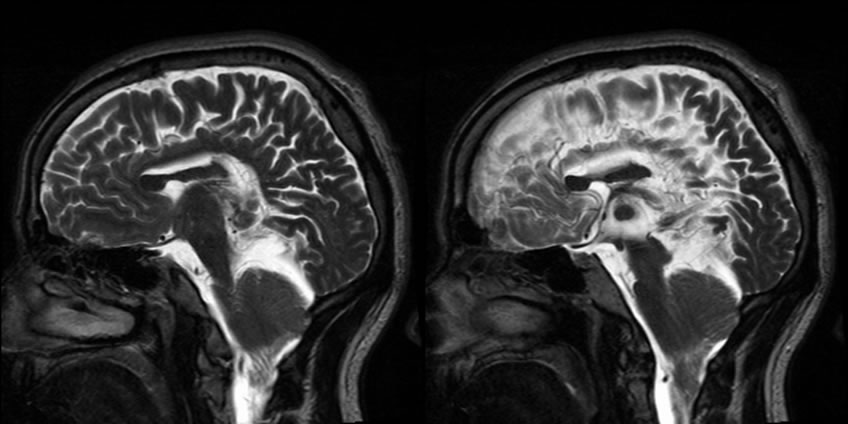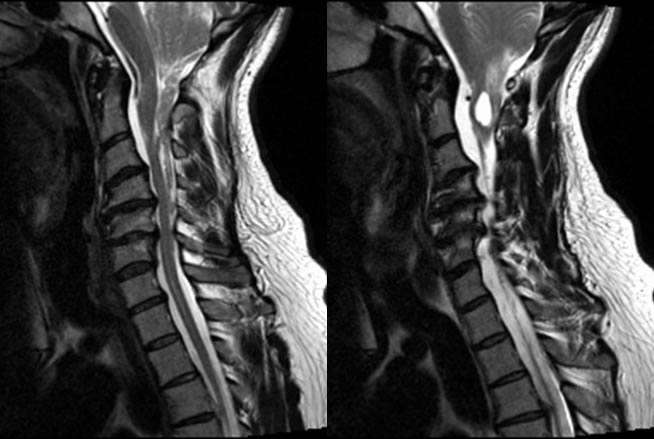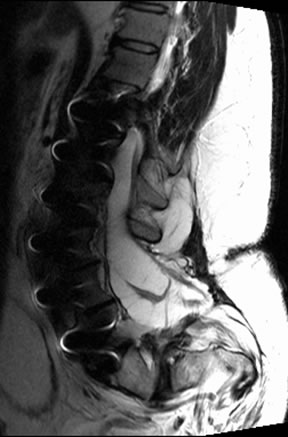


Chiari II Malformation
Findings:
Sagittal MR imaging of the brain demonstrates a small posterior fossa with a markedly elongated fourth ventricle that extends below the foramen magnum. There is also evident beaking of the tectum, hypoplastic corpus callosum, and hypoplastic falx.
Sagittal cervical spine MR images show that the cerebellar tonsillar tissue is elongated and herniates through the foramen magnum to the C4-5 level. There is a cystic lesion on the right which likely represents cystic dilatation of the foramen of Luschka. There is multilevel degenerative disc disease with canal narrowing.
Sagittal MR images of the lumbar spine shows a myelomeningocele of the distal thecal sac. There is accentuated lumbar lordosis and postoperative changes from spinal fusion at T11-L4. The conus medullaris is elongated and extends to the L4-5 level. There is likely a tethered cord.
Discussion:
Chiari II malformation is a relatively common congenital malformation of the posterior fossa. Virtually all Chiari II malformations are associated with a neural tube defect, most commonly a lumbar myelomeningocele, as in this patient. It is believed that the neural tube defect arises first, which allows for CSF leakage and failure to maintain 4th ventricle distension. In turn, this leads to a hypoplastic posterior fossa and distortion of posterior fossa contents. The compressed posterior fossa is associated with a low attachment of the tentorium and hypoplastic falx cerebelli. The brainstem is described as appearing "pulled down," elongated, and straw-like with extension through the foramen magnum. Additionally, there is herniation of the cerebellar tonsils and vermis through the forman magnum, which has been described as a cascade or waterfall of tissue that runs in the spinal canal posterior to the cervical cord. There may also be herniation of posterior fossa contents superiorly through the incisura. Chiari II is also associated with a hypoplastic corpus callosum in 90% of cases. The incidence of Chiari II malformations is 1:1000 live births, and the presentation and treatment is variable due to the wide range of disease.
Case contributed by Christopher Heald, UC M4
BACK TO
MAIN PAGE



